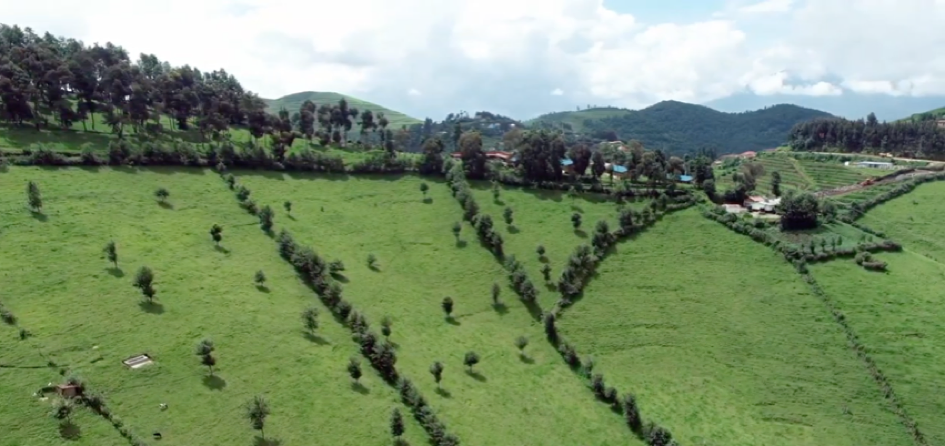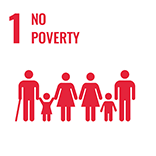Landscape Approach to Forest Restoration and Conservation in Rwanda

Summary
Funded by the World Bank, the landscape Approach to Forest Restoration and Conservation project seeks to develop silvopastoralism as a strategy to boost farm productivity while also restoring the degraded forests in Rwanda’s Western Province. Gishwati-Mukura National Park is located in Rwanda’s Western Province, near the border with the Democratic Republic of the Congo. Gishwati and Mukura are two nearby forests that together span several districts. They were originally designated as forest conservation zones and therefore protected from human activities. However, the forest cover has reduced rapidly in both forests and the areas have suffered from erosion and environmental degradation. Gishwati mountain chain used to have a large tropical rainforest, which has dramatically degraded due to unsustainable human activities such as deforestation and illegal mining. The area is located in very steep mountainous terrain, occupied by farmers who are greatly affected by erosion and unfavourable climatic conditions.
As a solution to this, a five-year project known as Landscape Approach to Forest Restoration and Conservation (LAFREC) was started in 2015. LAFREC was built on a landscape approach, which is an integral and holistic approach that spans social, economic and environmental fields to mitigate trade-offs between different human and environmental needs. The project had three primary aspects to bring the forest ecosystems into better management and develop multiple benefits: (1) rehabilitating forests and biodiversity within the Gishwati and Mukura Forest Reserves; (2) enhancing sustainable land management in the agricultural lands between them; and (3) introducing silvopastoral approaches in the rangelands of the central former Gishwati Reserve.
While the large project contained a plethora of activities to achieve ecosystem restoration (such as rehabilitation of forests in the reserves, sustainable land management in the cultivation areas and expanding water supply through construction of water points), the introduction of silvopastoralism is particularly interesting. Silvopastoralism is an agroforestry farming technique that sees agriculture as part of a larger ecosystem. It is a tree-based livestock system, where trees, shrubs and other vegetation planted on pasturelands provide fodder.
It enables farmers to have paddocks for their farms, giving them control over grazing. The trees provide shelter for the animals during the dry season and some species, such as Sesbania sesban, Cytisus proliferus and Leucaena leucocephala, are fodder for the cattle and goats. The approach boosts farm productivity by increasing milk production and promotes environmental benefits with the restoration of the degraded landscape. The project also established fences around Gishwati-Mukura National Park to stop all human entry into the protected area, and the farmers’ cattle no longer graze in the park.
Overview
- Location:
- Implementation sites:
- Single country
- Single location
- Mountain region:
- Gishwati mountain
- Solution scale:
- Ecosystem type(s):
- Solution type(s):
- Sector(s):
- Climate impact(s) addressed:
- Impact time-scales:
- Co-benefits:
- Implementation timeline:
- 2015 - 2020
Solution details
Main beneficiaries & outcomes
The project beneficiaries will be rural residents of the Gishwati-Mukura landscape, who will benefit directly from support for sustainable intensification of agricultural production through improved land management, livelihoods diversification and improved flood warning and response systems. They will also benefit indirectly from improvements in environmental services, including watershed function, and potentials for nature-based tourism development linked to improved management of the scenic landscape and biodiversity.
In six years of implementation, the project has restored 603 hectares of forest and 32 hectares of illegal mining sites. Trees have been planted on 900 hectares of land and 446 hectares of farmland are now under silvopastoralism, benefiting both farmers and the environment. UNESCO granted the Gishwati-Mukura landscape Biosphere Reserve status, illustrating the project’s accomplishments.
The solution is estimated to have reached 40,482 direct beneficiaries, of whom 53 per cent were women. A total of 9,500 community members have been trained in sustainable land management, including silvopastoralism, forest management, land husbandry and agroforestry.
Planning and implementation
The five-year project started in 2015 and was implemented by the Rwanda Environment Management Authority (REMA), with the support of the Global Environment Facility (GEF) through the World Bank.
Finance
The total cost of the project was USD 9,532,000, including USD 5,487,000 from the Global Environment Facility (GEF) and USD 4,045,000 from the Least Developed Countries Fund (LDCF).
Innovation
This project implemented silvopastoralism, an agroforestry farming technique that sees agriculture as part of a larger ecosystem. Trees, shrubs and other vegetation are planted to support the livestock system. For example, traditional medicinal trees and plants for animals, forage plants and shade trees were planted. The approach creates multiple benefits for farming, animals and the environment.



(0) Comments
There is no content